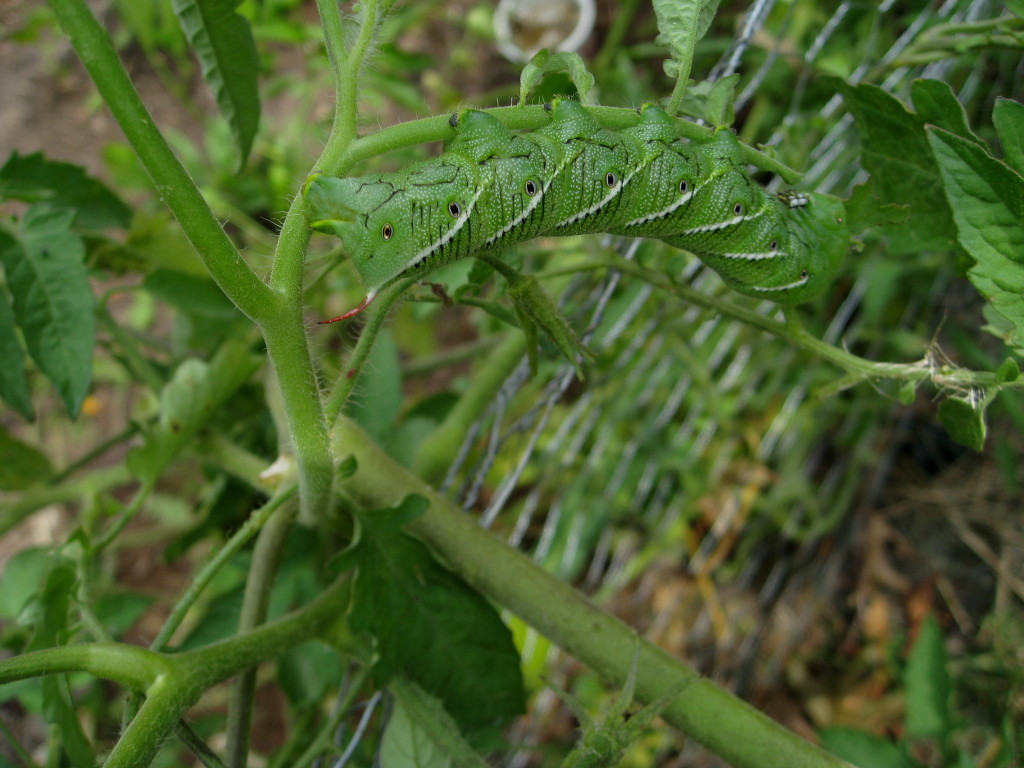I’m sure that Texas folks will be happy to argue for or against “Hook ‘Em Horns”, but I’m talking tomato hornworms. 
Found one of these bad boys chewing a tomato this week. He was summarily reduced to green goo. …
Adventures in Square Foot Gardening
By lpilewski
By lpilewski
How many peppers are in a peck? Inquiring minds want to know. Hold on – checking Wikipedia….
A peck is an imperial and United States customary unit of dry volume, equivalent to 2 gallons or 8 dry quarts or 16 dry pints (9.09 (UK) or 8.81(US) liters). Two pecks make a kenning (obsolete), and four pecks make a bushel.
 So, we didn’t pick a peck of peppers, but a nice handful anyway! Week 15 is clearly pepper week….
So, we didn’t pick a peck of peppers, but a nice handful anyway! Week 15 is clearly pepper week….
By lpilewski
After waiting three months, we have our first beefsteak type tomatoes of the summer and they’re beautiful!
That’s two Mr. Stripey and one Hillbilly, I think. These two plants grew so close/entangled that I can’t really tell which is which!…
By lpilewski
Round two for the squares that were harvested as well as the addition of a new tomato! We wound up replacing 6 squares total – one each zinnia and marigold that didn’t grow, and squares for the spinach, arugula, radish that were harvested. The final square was a replacement for failed oregano.
You’ll notice that most of these seeds are from GrowJourney. This is a seed of the month club right here in Greenville, SC. …
By lpilewski
Week 4 and it is time to add the supports for the tomato, zucchini and pepper plants. These are tomato towers that we ordered through squarefootgardening.com ($39.99/each). They would have been really easy to make using conduit, rebar and netting, but I’ll admit to taking the easy way out and just having them delivered. (This is a spectacularly busy time at Soil and Water – what with Earth Month and all) It’s all set up below.
This whole project took about 20 minutes for setting up and intall. Super easy and quick! Here’s the way it went…
First, the package:
Components laid out:
Now, assembly time! Position the curved pieces behind the bed to easily see where the rebar supports need to go. Hammer that rebar into the ground.
You can see here how far into the ground we went:
Next – slide the poles onto the rebar
Then attach the tops and secure the netting. You can tie it on, but we used zip ties. We had them, they were convenient and easy! (can you see the convenient theme running through this project?)
Final Product!
District Programs Coordinator at Greenville County Soil and Water Conservation District
Square Foot Gardener in Taylors, SC